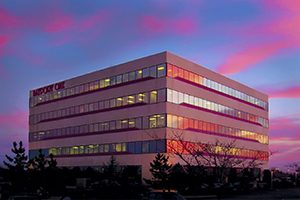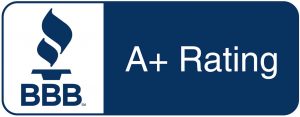Monthly Archives: April 2019
10 Steps to Responsible Driving
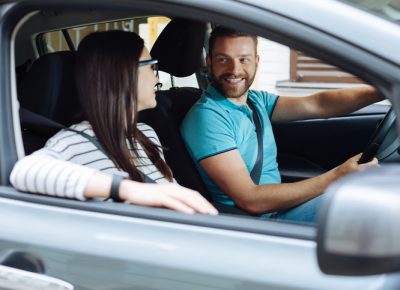
Let’s look at ways to improve your responsible driving habits. Since you cannot control the actions of other road users, you must rely on your own driving skills and experience. Following these ten rules ensures that your driving is safe and courteous to all who share the road with you.
- Plan Your Route: Know where you’re going ahead of time. Tune into a local media source to be well informed about weather and road conditions or traffic activity on your route. Then you can avoid delays or allow extra drive time. For longer trips, include a rest stop every two hours. Stop sooner if you are tired.
- Maintain Your Vehicle: Read your vehicle’s owner’s manual and follow the recommended schedule for maintenance service. Conduct your own routine check-ups on: tires, brakes, lights, wipers, and fluid levels. For good visibility make sure your mirrors, windows and outside lights are clean. Secure any loose items or cargo that could become a hazard.
- Focus Your Attention: Being a safe driver means being both physically and mentally prepared to drive. Being well rested, alert and attentive enables you to respond quickly when other drivers do not make that choice. Take a break if you have difficulty focusing. Remain calm—don’t let your temper or frustration cause you to act recklessly.
- Minimize Your Distractions: Taking your hands off the wheel, your eyes off the road or your mind off of the driving task puts you and others at risk. People, objects, or events inside and outside your vehicle can distract you. Driving demands total concentration. Any activities that interfere with your driving are more than you can safely manage.
- Know Your Surroundings: Look out for trouble. Scan the roadway continually for hazards. Keep your eyes moving, looking from one side to the other. Know what is happening well ahead of you, watch for taillights. Know what is to the rear and sides of your vehicle. Use the mirrors to keep an eye on traffic behind you.
- Share Your Space: Many crashes could be prevented if drivers behaved courteously to other road users. You share the road with drivers of various ages and skill levels. You also share the road with pedestrians, bicyclists, motorcyclists, and vehicles of varying sizes. Be aware of special needs and limitations of other drivers and roadway users.
- Watch Your Speed: Posted maximum speeds are for ideal driving conditions. Adjust your speed for traffic, road and visibility conditions or when not operating at your best. Higher speeds magnify your errors and provide less time to identify and react to a hazard, stopping distances are longer and crashes are more severe.
- Keep Your Distance: Give yourself room to maneuver. You’ll need it in a crisis. To protect yourself, keep a large “safety cushion” around your vehicle. This will enable you to change lanes safely and give you room to take evasive action in emergencies. Keeping a safe distance between vehicles increases your ability to see and to be seen by other drivers.
- Signal Your Intentions: Driving can be a stressful business. Be courteous and signal your intentions so other road users know what you plan to do next. Be predictable. Don’t hesitate to use your horn or headlights to establish eye contact, when needed. Remember to express your thanks, by a wave of the hand or a flash of your lights.
- Always Wear Your Seat Belt: Seat belts are your best defense in a crash. Being properly secured keeps you in control of your vehicle and ready to react to a hazardous situation. So buckle up … and that includes your children and other passengers in front and rear seats.
8 Things to Do When Involved Car Accidents
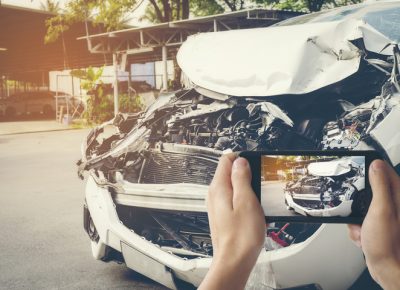
The average driver will be in about four car accidents over the course of their lifetime, according to auto industry experts. Six million car accidents occur every year, one in three, involves personal injury to the driver or passengers in the vehicle. It is important to know what to do to protect yourself when you have been involved in a car accident. Here is a list of the 8 things to do when you been involved in a car accident:
When Involved in Car Accidents, FIRST Stop.
If you are ever involved in an accident, even one that is minor, you must stop. Never drive away from the scene.
When Involved in Car Accidents, SECOND Protect Yourself.
Make sure to keep yourself safe at the scene of the accident. Set up flares, put your flashers on and if it is dark keep your lights on.
When Involved in Car Accidents, THIRD Call the Police.
Even if there are no injuries, you should report the accident to the police. Even if the accident seems minor consider the following: you may not notice all of the damage to your car immediately; the other may make false claims about the car accident later; the other party may admit fault to you but change his mind as time passes. If the police can’t come to the scene of the accident, you can go to the nearest police station and complete a report yourself. You must do this within 10 days after the accident. Often you will need the report to file a claim with your insurance company.
When Involved in Car Accidents, FOURTH Take Pictures and/or Video.
If you have your cell phone with you, you have the perfect recording device. Take pictures of the vehicles if the damage is visible. Record the conversation that you have with the other driver because they may admit that they were at fault. Keep in mind, it is not necessary to be holding the camera so that they know you are recording, you could even have it in a bag set on record. Before starting the recording, state their name and your name. This is important.
When Involved in Car Accidents, FIFTH Exchange Information.
Usually, the police will arrive on the scene and as part of their investigation will obtain this information. If for some reason police do not arrive to the accident scene, it is important for you to get the name, address and telephone number of everyone involved in the accident including drivers and passengers. Additionally, you should l exchange insurance information. If there are any witnesses to the accident, try to gather contact information from them. It will be helpful for your attorney as they handle your case. Do not let the other driver take a photo of your driver license.
When Involved in Car Accidents, SIXTH Report the Accident.
You should call your insurance company to report the accident as soon as possible. Your insurance company may try to make a quick cash offer, but do not accept any settlement before contacting your attorney.
When Involved in Car Accidents, SEVENTH Seek Medical Attention As Soon As Possible.
If you have been injured, not matter how small you deem the injury to be, you should seek medical attention at an urgent care center or your local ER.
When Involved in Car Accidents, FINALLY Contact an Attorney.
An attorney will have your best interest in mind, will protect your rights and will ensure that you receive the compensation you deserve.
If you or a family member has been injured in a car accident, due to the negligence of others, call us at 609-645-1111 to learn more. We would be happy to arrange for a confidential free consultation.
Trips, Slips and Falls: Things You Need to Know
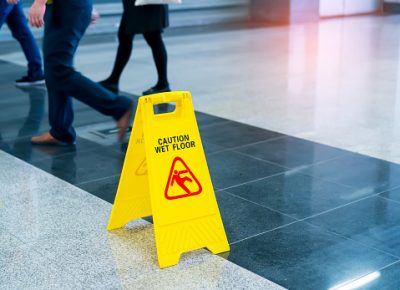
Trips, slips and falls can happen just about anywhere. You might slip on an icy step walking into your neighbor’s house or as you walk into the store to do the grocery shopping. There may be many reasons that you have an accident, but most often slips and falls occur because a property owner has not kept their property safe from dangerous conditions.
Property owners, including businesses and government buildings, have a responsibility to keep their properties maintained so that they are safe. Premises liability holds owners liable for injuries that may occur on their properties. If a property owner doesn’t maintain their property that put everyone in danger. Here are some common causes of slips, trips and falls:
- Dangerous walkways, flooring or failure to remove or treat snow or ice
- Poorly maintained parking lots
- Negligent or inadequate security
- Improper lighting
- Unsafe stairs, railings or balconies
If you experience slips and falls on someone else’s property, here is what you need to do:
- TAKE PHOTOS. The first and most important thing that you can do after you have fallen or been injured is to take pictures of the dangerous condition. If you are unable to take pictures, have someone take pictures for you of the area the fall occurred.
- SEEK MEDICAL ATTENTION. If you have been injured, you should seek medical care as soon as possible. It is important to document your injuries.
- DO NOT DISCUSS YOUR INJURY WITH THE PROPERTY OWNER OR AN INSURANCE COMPANY. Other than reporting your injury to the property owner when it has occurred, there is no need to discuss it with them or an insurance company until you have consulted with an experienced personal injury attorney.
Determining whether the property owner is responsible
Just because you have fallen on someone else’s property, it may not necessarily mean that they are liable. Your attorney will understand the nuances and intricacies of premises liability once you consult them. If you have been injured from a slip, trip, or fall or other negligent property owner act, please give us a call today for a free, confidential consultation.

